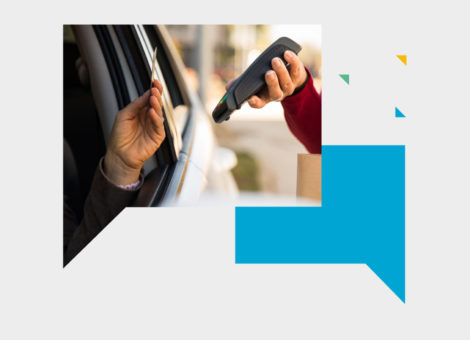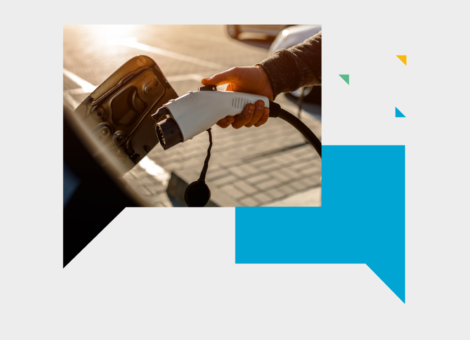2020 was the year of the convenience store. What will 2021 hold?
2020 has been a tough year for many business owners and the uncertainty is set to continue. As essential services, gas stations have been allowed to remain open to the public throughout the global COVID-19 pandemic, but falling fuel prices have had a negative effect on profitability.
As consumers became more conscious of attending crowded areas and moved towards shopping locally, many convenience stores saw an uplift in footfall. Click and collect services became more popular than ever and the convenience offered by local gas stations saw them become the “always accessible” shop of choice for their communities.
So with 2020 being “the year of the convenience store”, what’s in store for 2021?
The future is unclear. With possible changes in government and ongoing vaccine trials, the rumor mills are rife, and it’s not clear how different outcomes will affect the fuel and convenience retail industry.
Many authorities are predicting that the pandemic is set to continue. The Institute for Health Metrics and Evaluation (IHME) predicts that COVID rates may not settle for some time. So we can assume that traffic levels will remain lower, as people continue to work from home, avoid busy areas, and restrict travel where possible.
The IEA’s 2019 – 2025 forecast still predicts a slight increase in global fuel demand in 2021. Their forecasts show that after a dip in 2020, the demand will pick back up above the levels seen in 2019 and although long-term growth rates may have taken a hit, the industry will rebound in 2021. A blog we published back in July mirrors this prediction with multiple demand rebound projections suggesting a return to normal in 2021.
- 2021, the year of the delivery service?
Throughout the pandemic, quick service restaurants (QSRs) with drive-through facilities have remained popular. But rather than rebuild sites to accommodate drive-throughs, many savvy business owners have come up with creative ways to promote their QSR businesses. Remote ordering, contactless service, and carry-outs have been introduced to allow QSR sales to continue while maintaining social distancing and safety measures.
As the big fast-food brands, who have never offered delivery services before, start to introduce partnerships with the likes of Uber Eats and GrubHub, consumers now expect easy delivery options for their food orders. If you haven’t already got a delivery option in place for your QSR, 2021 is the time to introduce one.
- 2021, the year of the tech checkout?
Contactless transactions are becoming the norm and advances in technology are taking this to a new level. Amazon is leading the way in retail technology advancements with their Amazon Go store growth plans, creating frictionless shopping experiences throughout the US. These are completely unmanned grocery stores. Customers use an app to scan themselves into stores, whilst cameras track the items they pick up, and automatically collect payment, with no checkouts and no queues.
While no one will expect their local convenience store to offer this just yet, it’s important to understand how new offerings, like Amazon Go, can set the standard for customer experience. As people get used to innovative new retail solutions, it raises their expectations of what a shopping experience should be. Over time, no queues and multiple quick payment options will become the norm.
Introducing new point-of-sale systems that allow mobile payments will help to increase convenience and speed up transactions in your store. New self-service checkouts can reduce queues and give customers a contactless checkout option, which is increasingly important to many consumers during this pandemic.
- 2021, the year of the gas station experience?
Technology and the internet have changed the way we shop, for good. The convenience offered by internet shopping has caused a steady decline in sales for physical retail stores. To combat this, many stores are turning their attention to “experiential retail”.
This is the idea that stores should be used to give consumers an immersive experience. It’s not just about buying goods, but the things that customers can get from you that they can’t get online. It’s all about creating emotional connections and shareable experiences for your patrons.
For gas stations and convenience stores this means delivering a service and experience that your customers just can’t get online. Welcoming seating areas, fresh deli counters, and arcade games are just some of the things we’ve seen introduced into gas stations to improve on shopper’s overall experiences.
Some fuel and convenience retailers have successfully harnessed the power of social media through their in-store experiences. Way back in 2018, 7-Eleven Australia’s “Slurpee BYO Cup Day” had customers flocking to their store to drink Slurpees out of coconuts, kettles, shoes, water coolers, and a host of other interesting containers — all happily shared on Instagram using #BYOCUPDAY. More recently, QuikTrip released “let it snackle” Christmas jumpers as part of their #QTfortheholidays series. Experiences and promotions like these can attract people into your stores and give you great brand exposure, assuming they’re executed with any future social distancing measures in mind.
These experiential changes will become more and more necessary as electric vehicle (EV) usage grows. The rise of EV is set to impact the size of, and the services offered by, gas stations and convenience stores. Even with the fastest EV charging points, customers will need to spend approximately 15 minutes at your site. Creating a welcoming retail experience for consumers will impact how EV customers view your store and make your site the destination of choice for EV drivers.
2021: the year of innovation.
With cultural shifts, changes in consumer behavior, and technological advances influencing the fuel and convenience industry, 2021 could well be the year of innovation.
The “new normal” has settled in – and is here to stay. How will your store adapt?
You can read more about changes in consumer behavior in this three-part blog series: “Understanding ever changing market conditions with mobility data”.
However you decide to adapt, Kalibrate offers the data you need to drive better decisions.
Read more articles about:
Location intelligenceSubscribe and get the latest updates
You may unsubscribe from our mailing list at any time. To understand how and why we process your data, please see our Privacy & Cookies Policy
Related Resources
Uncategorized
Convenience is king: Are you adapting to the evolving retail environment?
Kalibrate's CEO shares his 2021 predictions on retail forecourts, increasing M&A activity, changing consumer...

Electric Vehicles
2021 predictions — fuel retail, data and analytics, and the future of EVs
Anila Siraj, Head of Data Strategy at Kalibrate, shares her 2020 trends on the fuel retail market, including how...

